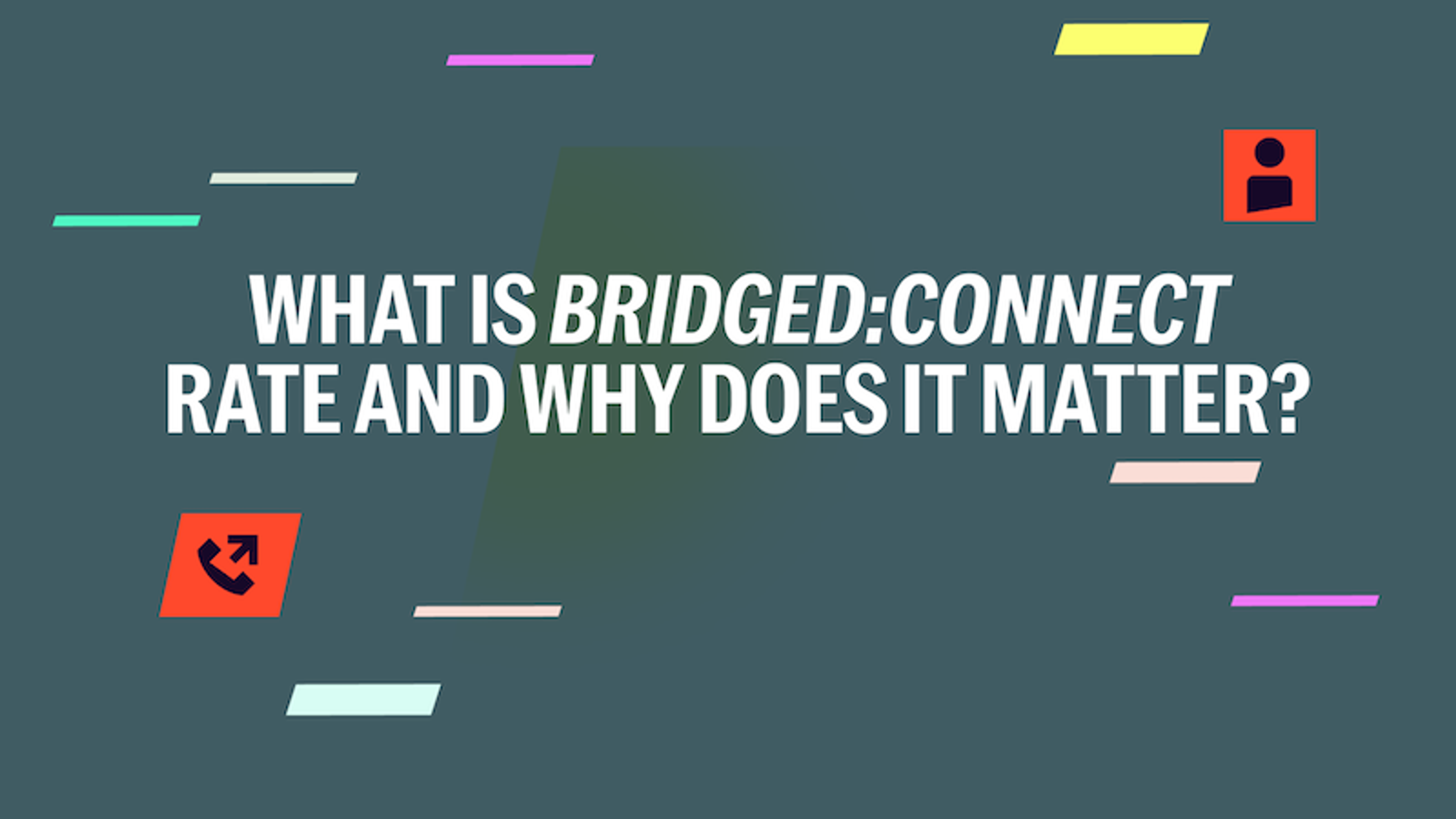What is bridged:connect rate and why does it matter?


Bridge time is a hot topic in the cold calling and AI dialer space. You want your dialer to quickly identify that a human is speaking and bridge the rep into the conversation. However, a lot can happen between when the AI detects a human voice and when the rep is bridged into the call, which could prevent a connection from actually happening. Orum focuses on a metric called Bridged:Connect, which helps customers understand how well the platform and your reps work together.
What is a Bridged:Connect Rate?
To understand what the Bridged:Connect rate is, we need to understand some of the metrics that surround it:
- A call is considered Bridged when the dialer detects that a human has answered the call and then “bridges in” the rep to speak with them. Bridged describes the decision made by the AI.
- A Connect should be defined as speaking to the intended prospect. Your strategy for marking dispositions as connects in your dialer needs to be granular, with little room for ambiguity. Other AI dialers define a Connect as speaking to any live human—this is not specific enough.
- A Conversation is considered to occur when a connect exceeds 60 seconds of talk time. At this threshold, the rep can confirm they are speaking with the correct person and make their pitch.
Orum defines Bridged:Connect rate as the percentage of time a bridged call results in a connect.
What is a good Bridged:Connect Rate?
Your Bridged:Connect rate should be at least 50%, meaning one out of every two calls your dialer bridges the rep into results in an actual connection to a live person. If you have a lower rate, there is an issue with your dialer or reps. Here are some of the common issues that are associated with having a low Bridged:Connect rate:
False positives
If your AI dialer is inaccurate, it incorrectly interprets an answering machine as a live human. When this happens, the rep gets bridged in, but then they are stuck listening to an answering machine. This results in wasted time for your reps, slowing them down and reducing the number of conversations they can have with live prospects.
Reps are hanging up
Sometimes, reps hang up when they are bridged in before they can talk with the prospect. This can be for various reasons: maybe they need more training, are nervous on the phone, or are trying to fabricate their numbers. A good way to check if this is the problem is to look at the Bridged:Connect rate across reps. If only some reps have low rates while most are over 50%, then the problem is likely specific to those reps.
Reps are incorrectly dispositioning
A low Bridged:Connect rate could indicate that your reps are selecting non-connect dispositions for connected calls. This is usually a training issue where reps don’t understand how to correctly disposition different calls. For example, you may have a disposition option like “busy” that is meant to indicate that the phone line was busy when the rep called. However, a rep may speak with the prospect who says they are too busy to speak, and the rep may then assign the “busy” disposition incorrectly. These incorrect dispositions can artificially lower your Bridged:Connect rate.
Data quality issues and wrong numbers
Sometimes the wrong person answers the phone. This could be because you have the wrong number for that contact, or, if you call into offices, it could be a receptionist that picks up. It’s important that calls where the rep is bridged in and speaks to a live human, but not the target prospect, are correctly dispositioned and not categorized as a connect. This is a subtle difference that many AI dialers get wrong because they treat any connection with a human as a connect.
How do I find out my Bridged:Connect rate?
Orum is the only Live Conversation Platform that provides users with a Bridged:Connect rate in analytics. Other dialing platforms simply collapse the concepts of bridged and connect into a connect metric. Lacking this context makes it harder to diagnose and fix issues that may be holding your team back.
If you don’t have access to a Bridged:Connect rate, the next best thing you can do is read through transcripts of short calls to understand what is happening. Or, you can request a demo of Orum to access the analytics your team needs to optimize your performance.





